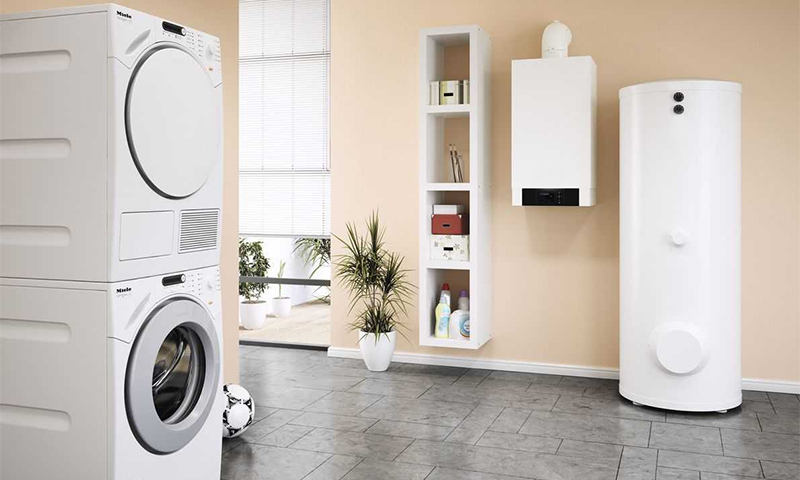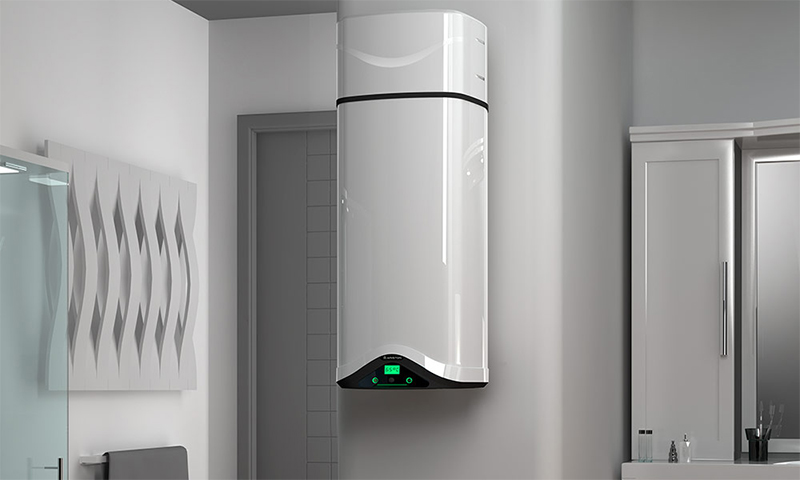The hot water system can be arranged according to different schemes. The most practical option is centralized DHW used in multi-apartment buildings. Not inferior to him, in particular for private houses, the version with a boiler with indirect heating. These networks are not always, for one reason or another, working properly. In such situations, a gas instantaneous gas water heater, called a column, will always help out. The device is able to provide in the shortest possible time with hot water one or more points of the fence, and it is inexpensive itself, it performs its functions properly. Of course, this unit is designed for local hot water, but sometimes it is simply impossible to do without it. You need to be able to choose such a column - in the article this topic is itemized.

Content:
The best manufacturers of gas heaters - which company to choose
Correctly choose a gas column is not easy. It is better to start with manufacturers that are engaged in the production of instantaneous water heaters professionally, and for a long time.
These are the companies below, in which long-term service is combined with user confidence.
- Electrolux.
- Bosch.
- Ariston.
- Zanussi.
- Hyundai.
- See also: Top geysers
The principle of operation and the device geyser

Geyser - compact instantaneous water heater, which is mounted on the wall in an upright position. Designed for heating cold water to create a local hot water supply - designed for 1 or more points of analysis.
The structure includes:
1. Rectangular-parallelepiped case;
2. Gas-burner;
3. The combustion chamber;
4. Heat exchanger;
5. Exhaust manifold;
6. Release under the chimney;
7. Gas fitting;
8. Inlet / outlet connections for cold / hot water;
9. Security system and control buttons.
Depending on the variety, the device has individual structural features:
1. The combustion chamber is open and closed;
2. Ignition - piezometric, electric and hydro turbine;
3. Gas burner - constant and variable power (modulation).
Modern speakers are much more perfect than older models. To start them, just open the mixer tap.
As a result:
1. Water enters the unit and simultaneously opens the valve for fuel supply;
2. Ignition automatically turns on;
3. The burner ignites, the fire of which heats the liquid through a heat exchanger;
4. The resulting hot water is sent to the mixers;
5. Combustion products are discharged through a vertical or coaxial chimney.
When the valve is closed, the gas and liquid supply stops and the flame goes out. In the event of a malfunction of the heater or emergency situations, the security system is activated.
Types of geysers
With open camera

When the firebox is open, the air that supports combustion comes from inside the room where the water heater is installed.
For example, from the bathroom, where the installation is not always allowed, or from the kitchen. In private homes, as a rule, specially adapted non-residential premises with 3-fold air exchange are allocated under the column.
An apparatus of this type is equipped with an atmospheric burner and a vertical outlet (2 turns of 90 ° each), through which exhaust gases are removed using natural draft.
For apartment buildings, based on regulatory documents, it is prohibited to use the ventilation duct as a flue.
Advantages:
- comparative simplicity of design;
- non-volatility of a significant part of the models;
- noiseless operation;
- big choice;
- affordability.
Disadvantages:
- air consumption from the inside;
- need for a chimney.
Devices with an open combustion chamber are installed in apartments and in private homes. For the latter, they are more suitable. At least for the reason that it is easier to solve technical issues and less problems arise with the gas or fire service.
With closed camera

To install devices with a closed firebox, the requirements are relatively not so tough - the working compartment is hermetically “sewn up”, so the air is consumed not from the interior, but from the street.
Instead of the standard vertical chimney, a coaxial horizontal one is used - it consists of an internal pipe through which combustion products are output using an electric fan, and an external one designed to supply oxygen from the outside.
In such devices, the atmospheric burner is replaced by a turbocharged one. Since the air for the operation of the column is taken outside the home, it is possible to install such a water heater in almost any room.
Advantages:
- increased operational safety;
- possibility of installation in any room;
- high efficiency and environmental friendliness;
- comfort of use;
- comparative ease of installation.
Disadvantages:
- volatility: the fan is connected to the network;
- noisy during operation;
- relatively high price.
Devices with a closed combustion chamber are installed virtually in any buildings. In high-rise residential buildings in some regions, a coaxial pipe is prohibited - only its separate version is allowed only with air inflow through the wall.
With piezometric ignition

In devices with a semi-automatic ignition mode, there are 2 burners: one is a pilot burner, which functions continuously; the other is the main one, working only in the interval between turning the crane on and off.
When starting the water heater: the corresponding button is pressed on the front panel; candles give caviar; ignited pilot wick. After opening the tap, the fire spreads to the main burner.
When the apparatus is in operation, both heaters are functioning, after the hot water has been shut off, only the pilot burns. This option of ignition is far from economical, but in places with frequent power outages is popular with the population.
Advantages:
- cheaper water heaters;
- energy independence;
- ease of use.
Disadvantages:
- additional, albeit minor, gas consumption.
Devices with piezometric ignition are non-volatile, so they are installed in houses, apartments and cottages in which power outages are a frequent occurrence. In addition, financial losses from a constantly burning wick are insignificant.
Electric ignition

Gas in the columns operating in automatic mode is supplied and ignited only after the crane is turned - at other times it is not consumed.
The operation is carried out using an electronic unit that controls the ignition and the combustion process. Directly involved in the ignition of gas are 2 batteries that need to be changed about once a year - it is with their help that they create the sparks necessary to form a fire.
Also models are produced that are connected from the 220 V power supply network - in this case, an electronic stabilizer is additionally purchased, prolonging the life of the water heater, in particular the imported one.
Advantages:
- use in more modern models;
- fuel consumption - the minimum required;
- increased operating comfort.
Disadvantages:
- dependence on electricity.
Devices with electric ignition should be installed in cottages and apartments, the energy supply in which is carried out without interruptions and power surges. Appliances that run on batteries are suitable for housing, regardless of the mode of electricity supply.
Gas selection options

Power
The main indicator of a flowing gas water heater is power, on which performance depends.
It is customary to divide devices into 3 categories according to this parameter:
1. 16 ... 20 kW - ≤ 11 l / min. - used to simultaneously provide 1 point;
2. 21 ... 25 kW - 12 ... 15 l / min. - used to simultaneously provide 2 plumbing fixtures;
3. 26 ... 31 kW - ≥ 16 l / min. - provides parallel operation of 3 parsing points.
Since the columns of different companies have their own characteristics, in the passport it is recommended to look primarily at the performance, as well as the temperature difference during heating.
Ignition
To turn on the water heater is used:
1. Piezo igniter;
2. Electrical ignition (from batteries or from 220 V);
3. In expensive models, the impulse is also used, which is caused by the functioning of the turbine. This option is possible with a water pressure of 0.35 bar.
The combustion chamber
The flow apparatus may have different combustion chambers:
1. Open - an atmospheric burner and a vertical chimney, through which the exhaust gas is drained, are necessary for operation.
2. Closed - used turbo burner and coaxial pipe. If there is no vertical chimney in an apartment building, the installation of an open model does not have a legal basis.
Type of burner
The burners are not only divided into atmospheric and turbinated - according to the peculiarities of their functioning, they are:
1. Constant power;
2. Variable power.
Variable-power burners, also called modulation, are much more progressive than constant-power burners, since they independently adjust the water temperature depending on the initial heating and pressure changes — both the liquid and the gas.
Heat exchanger
Heat exchangers are made of stainless steel with anti-corrosion characteristics, and high-purity copper, which, in addition to not rusting, also has a large heat transfer.
It is not recommended to choose a container from ordinary copper, because due to impurities it will eventually burst - even covered with heat-resistant paint.
Security
High-quality speakers are equipped with a variety of safety devices.
These include sensors:
1. Emergency pressure drop;
2. Combustion (ionization and thermal);
3. Traction in the chimney as well as the flow;
4. Temperature;
5. Overheating;
6. The level of water pressure.
What kind of gas column to choose

1. To provide 1 parity point with hot water, a device with a capacity of up to 20 kW is needed;
2. If you need a device with a simultaneous supply to the sink and shower, it will be enough 25 kW;
3. If you need to use 3 points in parallel, the heater will be enough for 30 kW;
4. When there is no vertical chimney in the apartment and there are problems with its device, a column with a closed combustion chamber is bought;
5. For a private house, the unit is suitable with both open and closed firebox;
6. In the case of an unstable power supply, it is advisable to purchase a device with piezo-ignition or electric firing on batteries;
7. The modulation burner is much more convenient and practical than a counterpart with constant power;
8. With a low pressure in the water supply network, an aggregate is selected with appropriate indicators, for example, from 0.1 bar;
9. The best heat exchanger is made of highly purified copper.
10. Special attention is paid to the security system. It must be equipped with all the sensors listed above.
How much does a gas boiler cost

1. Zanussi GWH 10 Fonte: 0.55 / 0.33 / 0.19 m; 18.5 kW; 10 l / min; 0.15 ... 10.0 bar. 4.7 ... 5.0 thousand rubles.
2. Ariston Fast Evo 11B: 0.58 / 0.31 / 0.21 m; 19.0 kW; 11 l / min; 0.1 ... 10.0 bar. 9.7 ... 11.3 thousand rubles.
3. Electrolux GWH 285 ERN NanoPro: 0.58 / 0.31 / 0.22 m; 19.2 kW; 11 l / min; 0.15 ... 13.0 bar. 7.2 ... 9.6 thousand rubles.
4. Mora Vega 13: 0.60 / 0.32 / 0.25 m; 22.6 kW; 13 l / min; 0.2 ... 10.0 bar. 20.4 ... 24.4 thousand rubles.
5. Neva Lux 5514: 0.65 / 0.35 / 0.24 m; 28.0 kW; 14 l / min; 0.3 ... 6.0 bar. 9.8 ... 11.9 thousand rubles.
6. Bosch WR 15-2P: 0.66 / 0.43 / 0.22 m; 26.2 kW; 15 l / min; 0.1 ... 12.0 bar. 12.8 ... 20.3 thousand rubles.
It will be interesting to friends too






